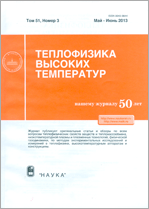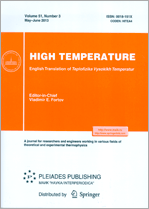|
|
Teplofizika vysokikh temperatur, 2008, Volume 46, Issue 6, Pages 864–869
(Mi tvt1159)
|
 |
|
 |
This article is cited in 4 scientific papers (total in 4 papers)
Thermophysical Properties of Materials
Premelting of iron at high pressures under conditions of contact with amorphous argon
S. V. Starikovabc, V. V. Stegailovca
a Moscow Institute of Physics and Technology (State University), Dolgoprudny, Moscow region
b Orenburg State University
c Joint Institute for High Temperatures, Russian Academy of Sciences, Moscow
Abstract:
Experiments involving shock-wave loading systematically produce higher melting temperatures than those obtained in experiments involving the use of diamond anvils (DAC). The melting temperature in DAC experiments is determined by structural changes on the surface of a solid in contact with another substance (for example, with argon). We use the method of molecular dynamics to investigate the process of iron melting from the surface in single-component and two-component (in the presence of argon as medium) cases at pressures of $\sim100$ GPa. In the argon-iron two-component model aimed at reproducing the conditions of static DAC measurements, premelting is observed at a temperature below $T_m$. The layer of iron adjacent to argon may make a transition to disordered state under certain conditions. The temperature interval at constant pressure, in which this effect is observed, is comparable in magnitude with the difference between the melting temperatures obtained as a result of dynamic and static measurements. Therefore, this effect may be one of the reasons for discrepancy between the experimental results for the melting curve of iron and other metals.
Received: 19.10.2007
Citation:
S. V. Starikov, V. V. Stegailov, “Premelting of iron at high pressures under conditions of contact with amorphous argon”, TVT, 46:6 (2008), 864–869; High Temperature, 46:6 (2008), 795–799
Linking options:
https://www.mathnet.ru/eng/tvt1159 https://www.mathnet.ru/eng/tvt/v46/i6/p864
|


|





 Contact us:
Contact us: Terms of Use
Terms of Use
 Registration to the website
Registration to the website Logotypes
Logotypes








 Citation in format
Citation in format 
